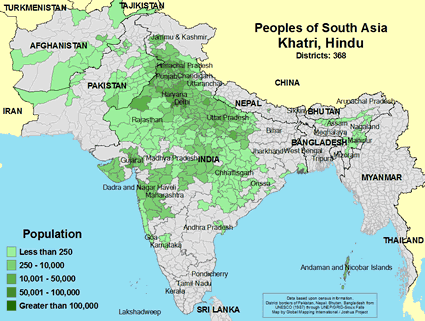 | ||
Eic atul khatri on indians traveling to america
Khatri is a caste from the northern Indian subcontinent. Khatris in India are mostly from the Punjab region.
Contents
- Eic atul khatri on indians traveling to america
- Eic atul khatri on pakistan and china
- Origin and varna status
- History
- Sanatan Khatris
- Arya Samaji Khatris
- Sikh Khatris
- Muslim Khatris
- Social divisions
- Source texts
- References
Khatris played an important role in India's trans regional trade during the Mughal Empire. They adopted administrative and military roles outside the Punjab region as well. Scott Cameron Levi describes Khatris among the "most important merchant communities of early modern India."
All the Sikh Gurus were Khatris.
Eic atul khatri on pakistan and china
Origin and varna status
As per Government of India records, "Khatri is a popular variant of the Sanskrit word Kshatriya, which was used to describe the warrior caste among the Hindu according to the Varanashram propounded by the Shastras". Khatris consider themselves to be of pure Vedic descent and thus superior to the Rajputs, who also claim Kshatriya status. Their standards of literacy and caste status were such during the early years of the Sikh community that, according to W. H. McLeod, they dominated it. Nath called Khatris a warlike race, a claim further supported by their employment as soldiers by Mughal emperors. However, by the time of British arrival in India, the Khatris were mostly involved in merchant and scribe occupation. Khatris sources explain this transition as follows: the Mughal emperors terminated the services of Khatris chieftains for moving against the imperial order of widow remarriage. Kenneth W Jones quoted that "the Khatris claimed with some justice and increasing insistence, the status of Rajputs, or Kshatriyas, a claim not granted by those above but illustrative of their ambiguous position on the great varna.scale of class divisions" Khatris claim that they were warriors who took to trade. The 19th-century Indians and the British administrators failed to agree whether the Khatri claim of Kshatriya status should be accepted, since the overwhelming majority of them were engaged in Vaishya (mercantile) occupations. There are Khatris that are found in other states of India and they follow different professions in each region. The Khatris of Gujarat and Rajasthan are said to have tailoring skills like "Darji" (tailor) caste. Dasrath Sharma described Khatris as a mixed pratiloma caste of low ritual status but suggested that Khatris could be a mixed caste born of Kshatriya fathers and Brahmin mothers.
According to Bichitra Natak, said to be the autobiography of the last Sikh Guru Gobind Singh, but whose authenticity is a matter of ongoing dispute, the Bedi sub-caste of the Khatris derives its lineage from Kush, the son of Rama in the Hindu mythology. The descendants of Kush, according to the disputed Bachitar Natak legend, learned the Vedas at Benares, and were thus called Bedis (Vedis). Similarly, according to the same legend, the Sodhi sub-caste claims descent from Lav, the other son of Rama.
History
The Khatri were originally engaged in the weaving of silk saris, and subsequently some of them became merchants. The region in which the Khatris originally lived was ruled by Hindu kings until 1013 AD. Khatris encountered hardships after the Muslim conquest of the region, but stubbornly clung to their heritage. Because of high levels of education and scholarship, they were able to survive even in difficult times.
The Khatris subsequently rose as an important trading community, and played an important role in India's trans regional trade under the Mughal Empire. With the patronage of Mughal nobles, the Khatris adopted administrative and military roles outside the Punjab region. According to a 19th-century Khatri legend, the Khatris followed the military profession until the time of the Mughal emperor Aurangzeb. Several Khatris were killed during the Aurangzeb's Deccan Campaign, and the emperor ordered their widows to be remarried. When the Khatris refused to obey this order, Aurangzeb terminated their military service, and directed them to be shopkeepers and brokers.
Sanatan Khatris
Khatris were estimated to constitute 9% of the total population of Delhi in 2003.
Arya Samaji Khatris
Dayananda Saraswati was invited to Punjab by prominent individuals who also founded the Singh Sabha, to counter the missionaries. He established Arya Samaj in Lahore in 1877, a society and reform movement which was against casteism, rituals, and idol worship. The group promoted strict monotheism, which Swami Dayanand claimed was the essential message of the Vedas. Arya Samaj became popular among Punjabi Hindus, especially Khatris who were attracted to a similar message by the Sikh Gurus earlier. Arya Samaj inspired individuals like Swami Shraddhanand and institutions like the Dayanand Anglo-Vedic Schools System, started by Lala Hansraj Gupta.
Sikh Khatris
All the ten Sikh Gurus were Khatris. Guru Nanak was a Bedi, Guru Angad was a Trehan, Guru Amar Das was a Bhalla, and the rest of the Gurus were Sodhis. During the lifetime of the Gurus, most of their major supporters and Sikhs were Khatris. A list of this is provided by a contemporary of the Sikh Gurus, Bhai Gurdas, in his Varan Bhai Gurdas.
Other Khatris influential in the history of Sikhism include:
Muslim Khatris
The Muslim Khatris are originally from Hindu Khatri community who had converted to Islam. In western districts of the Punjab (Sargodha, Mianwali, Multan, Jhang, Chakwal, Rawalpindi and Faislabad), converted Khatri traders called themselves Khawaja. Some times they are called Khawaja Sheikh.
Social divisions
Before the Partition of India in 1947, the Khatri sub-castes were particularly connected with specific regions:
After the Partition, the different Khatri castes have widely dispersed.
